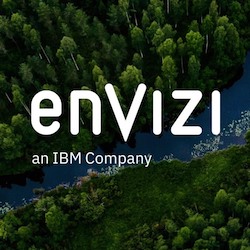Climate risks are intensifying. In the United States alone, there have been 377 billion-dollar weather and climate disasters since 1980, with an average of 8.4 events each year. And that is rapidly increasing, with 23 in 2023 alone. Hurricanes, floods, wind, heat waves, wildfires, and other weather calamities put people and places at risk – and they also harm businesses.
For instance, supply chain networks are at risk of being disrupted by climate-related events. Such events have an immediate impact on revenue, as inventory is unavailable, websites may be down, and outputs might not be available to make products the company sells. These issues have business leaders asking: what level of exposure does our global network have, what critical sites have the highest exposure to revenue loss, and what business continuity plans do we have in place?
The only way to answer these questions? Data.
Using data to monitor and report on climate risks
Data can enable businesses to better understand risks to the supply chain and physical infrastructure, and to inform planning processes. Data from suppliers, assets, and geospatial sources can be integrated to yield insights that inform climate adaptation and resilience strategies.
Geospatial data is also critical to unlocking a variety of use cases for businesses to protect their enterprise while also working more sustainably. These use cases include:
- Climate risk modeling to understand risk exposure for operations and to inform regulatory reporting
- Natural resources monitoring to enable sustainable forest management and track land coverage change and climate events response to biodiversity
- Sustainable sourcing to allow global supply chain transparency and traceability and to ensure compliance with deforestation regulations
- Assessing environmental impact of impurities like methane, pollen, and pollution
- Precision agriculture to increase yield and improve visibility of the food supply chain.
Understanding these risks allows a business to perform financial modeling on physical assets. Such insights also come at a critical time when regulatory mandates require businesses to report on several factors related to climate risk.
In March 2022, the International Sustainability Standards Board (ISSB) published Exposure Draft IFRS S2 Climate-related Disclosures, integrating and building on the recommendations of the Task Force on Climate-related Financial Disclosures (TCFD) and incorporating industry-based disclosure requirements derived from the Sustainability Accounting Standards Board. IFRS S2 requires that companies disclose information about climate-related risks and opportunities. And the U.S. Securities and Exchange Commission has expanded its required climate-related disclosures by public companies and in public offerings. Now, companies must disclose “material climate-related risks; activities to mitigate or adapt to such risks; information about the registrant’s board of directors’ oversight of climate-related risks and management’s role in managing material climate-related risks; and information on any climate-related targets or goals that are material to the registrant’s business, results of operations, or financial condition.”
Recent legislation in California requires that companies with revenue over $500 million and doing business in the state report greenhouse gas pollution from operations and indirect emissions, such as through employee travel, waste disposal, and supply chains.
Our sustainability team at Capgemini is knowledgeable about these ever-evolving regulations and we help companies discover how they can use data for accurate reporting and to uncover new pools of business value.
Getting to the root of climate risks
Capgemini works with Google Cloud partners to tap into Earth observation technologies in Google Earth Engine, along with the power of Big Query and Vertex AI, running on Google Cloud, to continuously monitor climate risks and identify impacts. Google Earth Engine has 40 years of historical data, more than 1,000 curated geospatial data sets, and machine learning to analyze and visualize Earth data at scale. We use these capabilities to aggregate and harmonize planetary data from multiple sources, including customer data. Then, on the Google Cloud platform, we apply climate data science and machine learning to turn pixels into insights that we deliver through APIs and decision-making systems. Together with Google, we have enabled modeling of agricultural drought conditions, providing visualization of drought on land plots using water balances. Businesses can use this application for water management of agricultural plots, signaling when to adjust water levels or adapt irrigation methods. We’re also using AI to monitor agricultural plots and detect weekly mowing, harvesting, growing, and plot abandonment events for specific crops.
Climate-related dangers pose significant risks to companies that produce goods using natural resources such as palm, cacao, coffee, wood, rubber, dairy, and many others. Climate-related events threaten these crops, creating shortages and impacting the manufacturing of many of the products that we use in our daily lives.
Furthermore, climate risks pose a significant threat to physical infrastructure and the businesses that rely on it. Buildings, roads, and other structures in coastal and inland cities alike are being damaged, and this disrupts businesses by causing closures, hindering supply chains, and sometimes raising repair costs.
Small steps that make a big difference
Given the breadth and scope of potential climate risks along with the urgency of regulations, businesses must use the data they have to protect their organizations and plan for the future. Capgemini works with clients to identify gaps and expected value, create and prioritize use cases, build climate risk solutions, pilot solutions, and scale after a successful launch.
We can also test and inform a variety of scenarios with our Business for Planet Modeling platform that analyzes a digital twin model of business scenarios and plans. This allows us to securely stress-test against a variety of future states relating to predictions on climate, economy, energy, and global conditions.
Climate risks will accelerate the threat to businesses and their revenue, so we must adapt to be resilient. The good news is that we have the tools to predict these issues and protect our businesses.
Author Franco Amalfi is director of sustainability strategic initiatives and partnerships at Capgemini. Related: Read more Capgemini guest blogs here.




